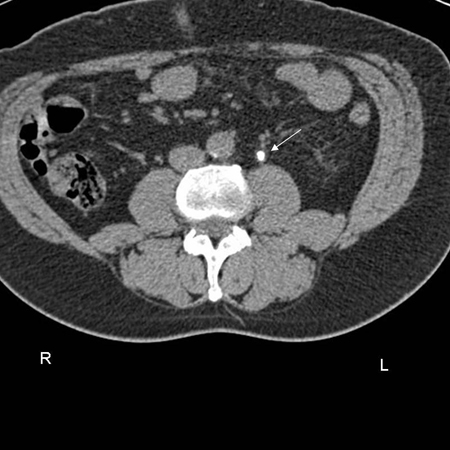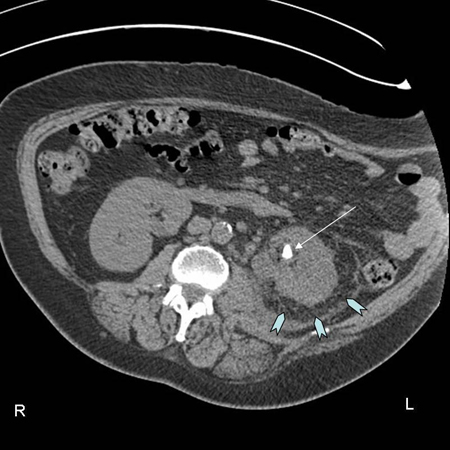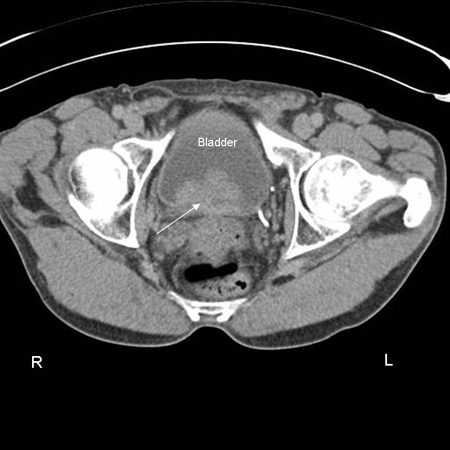Aetiology
Dysuria is generally a result of irritation of the urethra or the bladder. Inflammatory conditions that affect the urethra cause difficulties in initiating urination and a burning sensation. Irritation of the bladder causes bladder contraction, which leads to frequent and painful urination. Perineal lesions in women (e.g., from vulvovaginitis or herpes simplex virus infection) can become painful when exposed to urine.
The aetiology of dysuria can be broadly divided into two categories: infectious and non-infectious. The specific cause generally depends on sex and age group.
Women
15-30 years of age: urethritis is usually the most common cause.
30-50 years of age: likely to be due to gynaecological causes (in the absence of bacteriuria), urolithiasis, or urinary tract infections (UTIs).
>50 years of age: UTIs are most prevalent in this group.
All ages: prevalence of recurrent/chronic pyelonephritis steadily increases throughout all age groups.
Men
15-30 years of age: sexually transmitted diseases and non-infectious causes are most common, while prostatitis and UTIs are infrequent.
30-50 years of age: urolithiasis is the most frequent cause.
>50 years of age: benign prostatic hyperplasia (BPH), UTIs, and recurrent/chronic pyelonephritis are the most likely causes.[6][7]
Infectious
Dysuria most frequently results from an infection in the lower urinary tract (e.g., cystitis), but it may also be associated with an infection in the upper urinary tract (e.g., pyelonephritis).
Women are at greater risk than men for UTIs. This can be attributed to anatomical differences in the urethra: women have a short and straight urethra, which allows the ascent of bacteria from the perineum, causing infection in both the lower and upper urinary tracts.
Most uncomplicated UTIs are caused by Escherichia coli (70% to 95%). Between 5% and 10% are caused by Staphylococcus saprophyticus, while Proteus mirabilis and Klebsiella species are less common causes.[8]
Anomalies in urinary tract function and anatomy (e.g., bladder outlet obstruction from benign prostatic hypertrophy, urethral stricture, or neurogenic bladder from conditions such as multiple sclerosis) can lead to an increased risk of UTI with the more uncommon causative microorganisms, and to more severe infections.
Other infectious conditions that can cause dysuria include:[9][10][11][12]
Urethritis
Sexually transmitted diseases
Vulvovaginitis
Epididymo-orchitis
Balanitis/balanoposthitis
Prostatitis
Cervicitis
Schistosomiasis and tuberculosis are rare infectious causes in the western world, but they are more common in other parts of the world.
Non-infectious
Non-infectious causes can be subdivided into obstructive, traumatic, inflammatory, malignant, drug- or irritant-related, idiopathic.
Obstructive
Often increases the risk of UTI, as well as causing lower urinary tract symptoms in their own right. They include:
BPH
Urolithiasis (may cause dysuria as a direct result of trauma to the urothelium, as well as referred pain during the passage of stone/s)[Figure caption and citation for the preceding image starts]: CT scan showing left ureteric calculiFrom the personal collection of Dr Kasra Saeb-Parsy [Citation ends].
 [Figure caption and citation for the preceding image starts]: CT scan showing left renal stone (white arrow) with perinephric stranding around the left kidney (blue chevrons) and pyelonephritisFrom the personal collection of Dr Kasra Saeb-Parsy [Citation ends].
[Figure caption and citation for the preceding image starts]: CT scan showing left renal stone (white arrow) with perinephric stranding around the left kidney (blue chevrons) and pyelonephritisFrom the personal collection of Dr Kasra Saeb-Parsy [Citation ends].
Urethral strictures/stenosis.[13]
Traumatic
Dysuria is a result of damage to and irritation of the urothelium:
Catheterisation and instrumentation
Sexual abuse
Athletics (e.g., bicycling or horse riding)
Inflammatory
Dysuria is partly due to inflammation and irritation of the urothelium:
Interstitial cystitis[14]
Atrophic vaginitis
Spondyloarthropathies (e.g., Behçet syndrome or reactive arthritis)[15][16]
Non-infectious prostatitis
Ketamine-induced inflammation of the bladder[17]
Urinary fistula (a rare complication of inflammatory bowel disease and some malignancies)
Malignant
Dysuria is due partly to local involvement of tumour:
Prostate
Bladder [Figure caption and citation for the preceding image starts]: CT scan showing transitional cell carcinoma of the bladder blocking the right ureteric orificeFrom the personal collection of Dr Kasra Saeb-Parsy [Citation ends].

Renal
Gynaecological (particularly cervical)
Urethral
Penile
Drug- or irritant-related
Drugs and chemicals can cause inflammation of the urothelium, which can lead to dysuria:
Local irritants (e.g., soaps, douches, vaginal lubricants, spermicidal gels, contraceptive foams and sponges, tampons, and sanitary pads)[18][19][20]
Drug/herb-related (e.g., dopamine, cantharidin, ticarcillin, penicillin-G, cyclophosphamide.[21]
Idiopathic
Use of this content is subject to our disclaimer